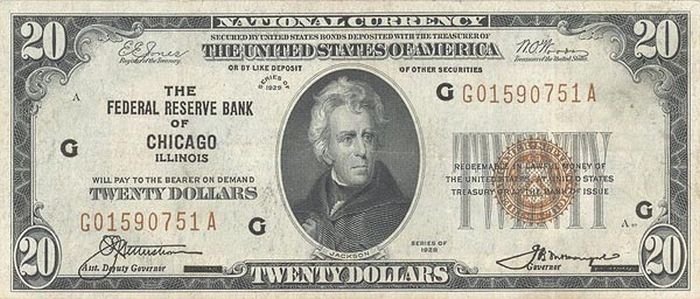|
|
Rare US Dollar Bill
|
"Grand", sometimes shortened to simply "G", is a common term for the amount of $1,000. The suffix "K" or "k" (from "kilo-") is also commonly used to denote this amount (such as "$10k" to mean $10,000). In colloquial English, when someone refers to a "large" or "stack", it is usually a reference to an amount that is a multiple of $1,000 (such as "fifty large" meaning $50,000). Banknotes' nicknames are the same as their values (such as "five", "twenty" etc.) The $100 bill is nicknamed "Benjamin", "Benji" or "Franklin" (after Benjamin Franklin, who is pictured on the note), "C-note" (C being the Roman numeral for 100), "Century note" or "bill" (e.g. "two bills" being $200). The $20 bill has been referred to as "double sawbuck", "dub" or "Jackson" (after Andrew Jackson); the $10 bill - as "sawbuck", "ten-spot" or "Hamilton" (after Alexander Hamilton); the $5 bill - as "fin", "fiver" or "five-spot". The $2 bill is sometimes called "deuce", "Tom", "Jefferson" or "T.J." (after Thomas Jefferson); and the $1 bill - "single" or "buck". The dollar has also been referred to as a "bone" and "bones" in plural (e.g. "twenty bones" is equal to $20) or a "bean". The newer designs are sometimes referred to as "Bigface" bills or "Monopoly money". Some people refer to U.S. money as "cha-chingers", "bucks", "green-backs" and "smackers".
In French-speaking areas of Louisiana, the dollar is referred to as "piastre" (pronounced "pee-as") and the French holdover "sous" (pronounced "soo") is used to refer to the cent.
In Panama, the equivalent of buck is "palo" (literally "stick").
|
|









